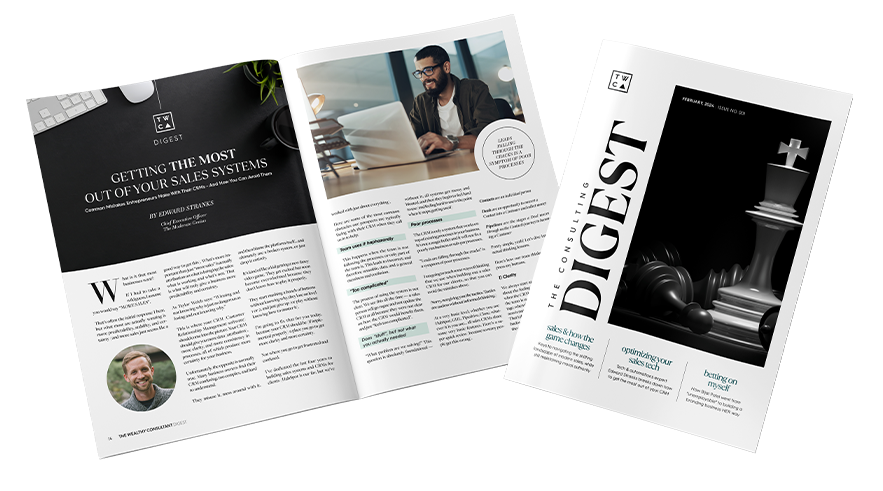5,000 Leads? Or 500 Customers?
Here’s an interesting thought experiment.
Would you rather have 5,000 leads? Or 500 customers?
Let’s define a “lead” as someone who has signaled interest via opting into one of your lead generation funnels. This could be the first step of a VSL/webinar funnel, or a lead magnet download, or a free challenge registrant (the list goes on and on).
A “customer” would be someone who has signaled interest by investing money to purchase a front end product from you (any amount of money).
What if we told you that leads (by themselves) were actually borderline worthless?
Nope, we’re not crazy… and we’re not kidding.
You see, by filling in their contact info in exchange for whatever you’ve offered them, a “lead” has given you two things – the ability and permission to contact them. But they’ve withheld the single most important thing required in order for conversion to take place.
Their attention.
We’ll get to why attention is so valuable in just a moment, but let’s talk for a minute about why lead generation isn’t nearly as effective as you think, and why customer acquisition is becoming the new top priority for marketers.
Is Generating Leads Actually Wasteful?
The LGI (Lead Generation Institute) performed a study in 2019, where they surveyed online marketers and business owners to ask about their lead generation strategies. What they found was fascinating:
Over 61% of marketers surveyed said that traffic and lead generation were the TOP priority for marketing inside of their business, but 80% of those surveyed said that they considered their lead gen efforts to be only slightly or somewhat effective, and 4% didn’t consider their efforts effective in the slightest.
This isn’t by mistake. You see, lead generation is (in and of itself) an inherently wasteful form of marketing.
The average VSL funnel, for instance, has a conversion rate on the the lead step of about 20%. That means that 80% of traffic does NOT proceed through your funnel… but you pay for 100% of the traffic.
Think about that. For every 1,000 people who click on your ad and go to your landing page, only 200 actually take action. The other 800? Well, you paid to get your ad in front of their eyeballs, and now they’re gone. So, how much money did you waste?
It’s difficult to even calculate.
Let’s take it one step further. Of those 200 that do opt in and take action, only somewhere between 1-3% (often less – especially in the consulting space) will qualify to purchase your high ticket product. So a very small percentage of a very small percentage.
That’s not to say that lead gen is a useless piece of your marketing machine, but it is the part where you are likely to waste the VAST majority of your budget. And, it is only effective insomuch as it feeds your middle of funnel marketing (lead nurturing via content, trainings, paid products, and direct offers).
So, if lead generation is an inherently wasteful marketing practice, but one that is somewhat “necessary” to feed your business, let’s talk about generating customers – by addressing the 3 types of currencies.
The 3 Currencies
There are three kinds of currency people are willing to pay you with:
- Their time
- Their attention
- Their money
The best front end offers collect all three. We’ll get to that in a second.
A savvy business owner understands the value of time. Time is a finite and non-renewable resource, so it can have immense weight as a currency.
However, it’s important to remember that the first two currencies are linked – time without attention does not produce conversion (remember what we said about the wastefulness of lead generation, which is typically time without attention)… and attention, as a currency, is useless without adequate time.
Money is the most interesting of the three. On the one hand, it’s a renewable resource, and therefore it is easier to get than time or attention. It’s always moving, always flowing, never stagnant.
But, money is also a “lever” that can effect the other two currencies. There are two ways that money does this.
The Two Money Levers
We’ve all been conditioned from a very young age to equate money with value. The more expensive something is, the more value we tend to attach to it.
This creates an interesting relationship between money and the other two currencies of your market – time and attention.
This relationship plays out via two “levers”:
- The forcing function
- The buying reflex
The forcing function of money is that it applies pressure to the purchaser to actually engage with the value you provide – because they paid for it, and nobody wants to waste money. So, in one action, you’re able to secure both their attention and their money (the latter of which is pretty useful if you actually want to build a profitable business).
As we said before, a lead is giving you the ability and permission to contact them. But a customer is giving you ability, permission, attention AND money.
Now, let’s talk habitual purchasing and the “buying reflex.”
One of the other valuable uses of money as a currency in your marketing machine is a purely psychological one.
Habitual purchasing is a term typically used when talking about commodities or basic goods – a consumer repeatedly purchases from a known brand, without the high barrier of research and due diligence.
In other words, if they buy from you ONCE, it gets easier and easier for them to buy from you again.
This is what we call the “buying reflex.”
If you generate a lead using a free training, and then you drop them into your content flywheel, and just provide free value over and over again… then you get them on a call and ask them to buy your high ticket product…
You haven’t engaged the buying reflex – they’re left confused, because you set the expectation of free value.
You started with, “Give me your time. Give me your attention.”
Now, you’re shifting to, “Give me your MONEY.”
This might work given a long enough time horizon and enough value sown in from your end to overcome that shift.
But, engaging the buying reflex makes this process so much smoother.
A customer who:
- Paid you $10 for a book – got value from it
- Then paid you $50 for a course – got value from that
- Then a few weeks later bought a $150 virtual ticket to an event
That person has paid you money 3 separate times to receive value from you. They are conditioned to pay money to receive value from you.
So, when you eventually get them on that sales call, and you drop the price – they’re not bothered by the idea of giving you money. They are EXPECTING it. You’ve trained them to anticipate it.
Lead generation, as a practice for businesses, will never fully die. There will always be some level at which it is necessary in order to fill the top of the funnel with attention so that you can sell further down in the funnel. But, in a cultural moment where attention, time, and money are all being pressured from a million different directions, getting the MOST out of your marketing via effective customer acquisition is going to be the new “normal.”
If you’re curious how to get started, our upcoming Consulting Digest issue has an article from Taylor all about the move from lead gen to customer acquisition and ways you can make the most of it – become a subscriber today so that you can unlock this issue on day one!

Get Monthly Insights Like the Ones in this Article Compiled and Sent Directly to You!
Each month, our team sits down and compiles our favorite lessons, strategies, tactics, and examples pulled from our work with thousands of clients. Then we bundle them all together in a beautiful printed magazine format and send it out to a community of hundreds of top consultants. If you want in, we have two ways to subscribe – each an astounding value in comparison to the price!

